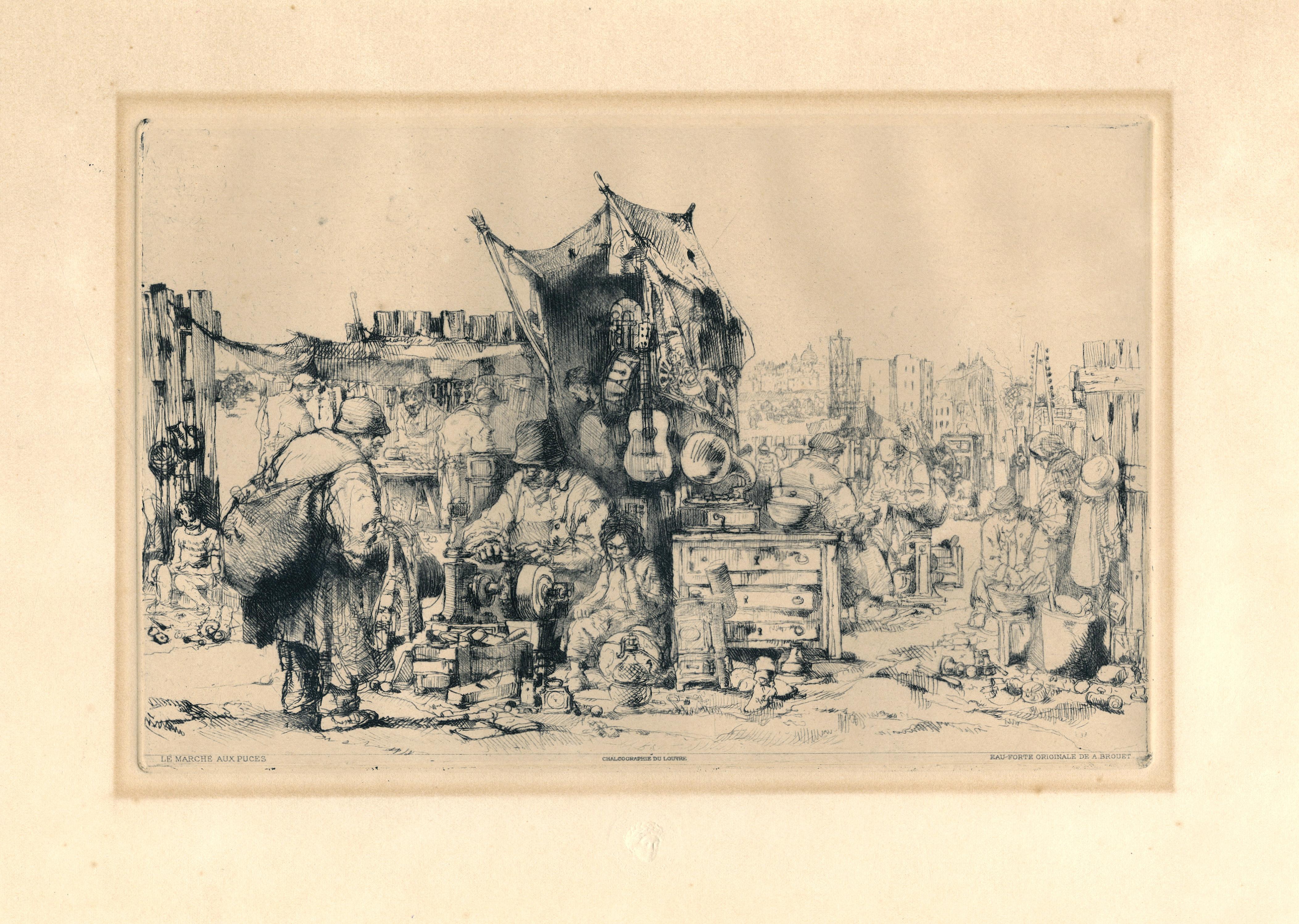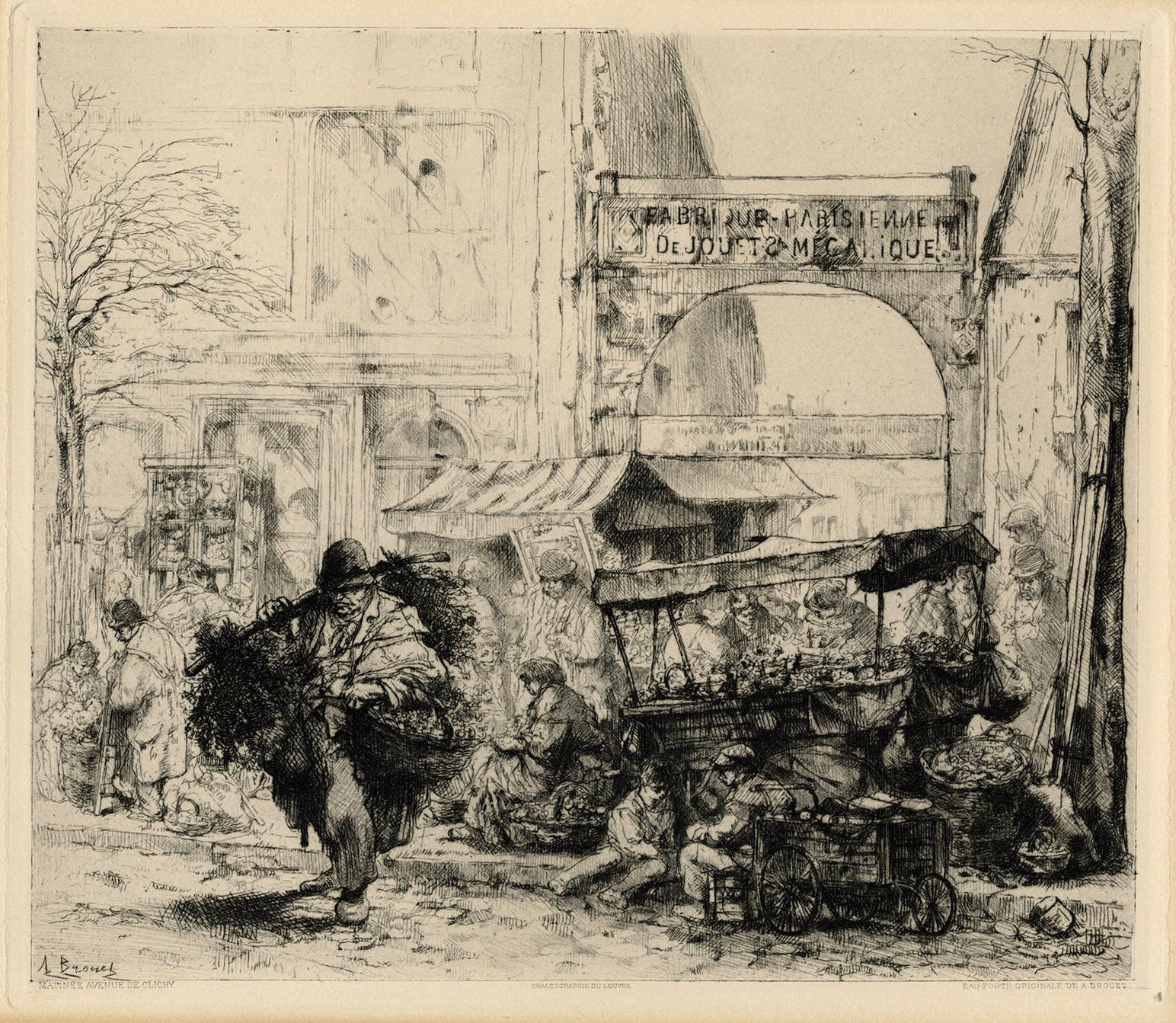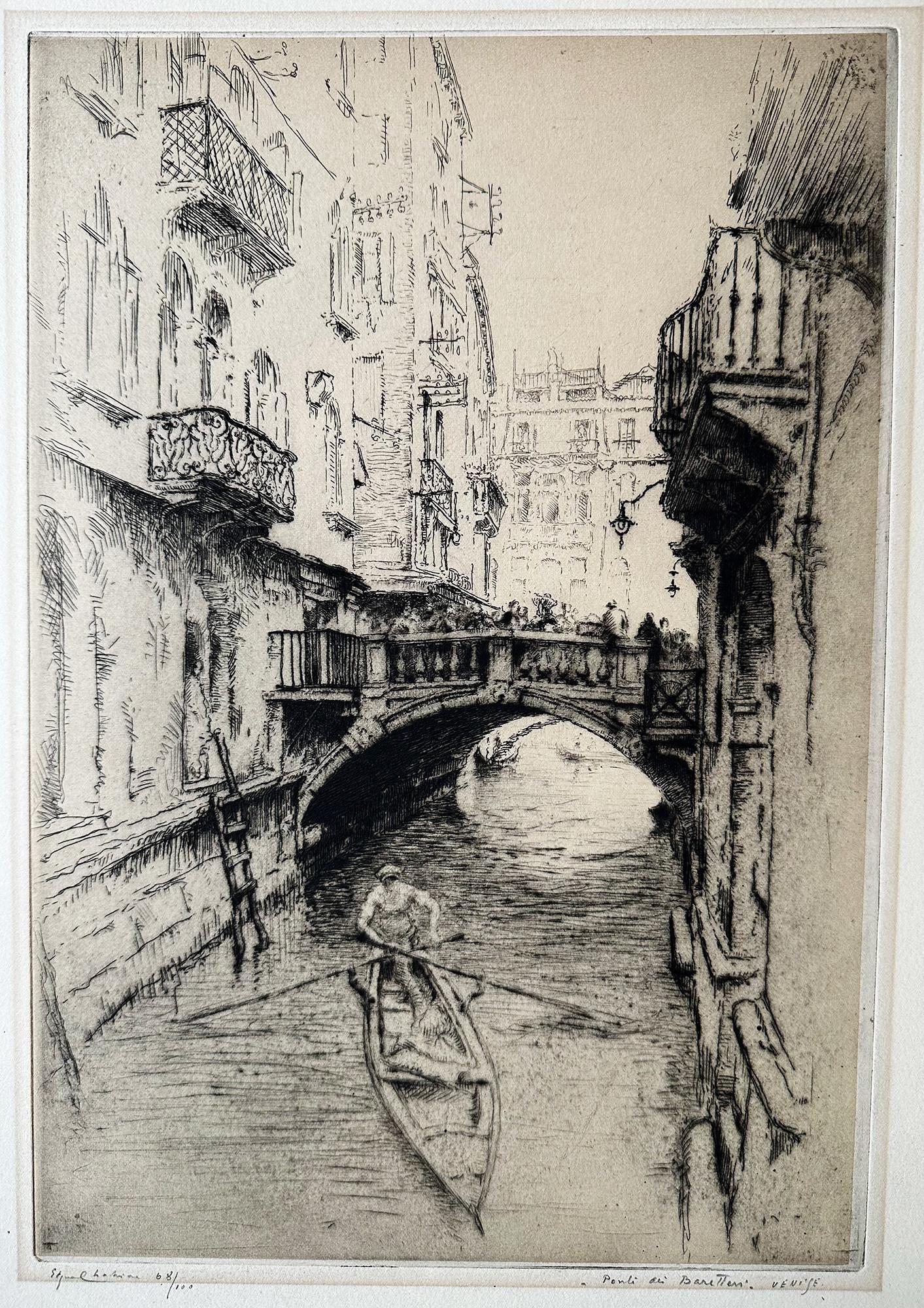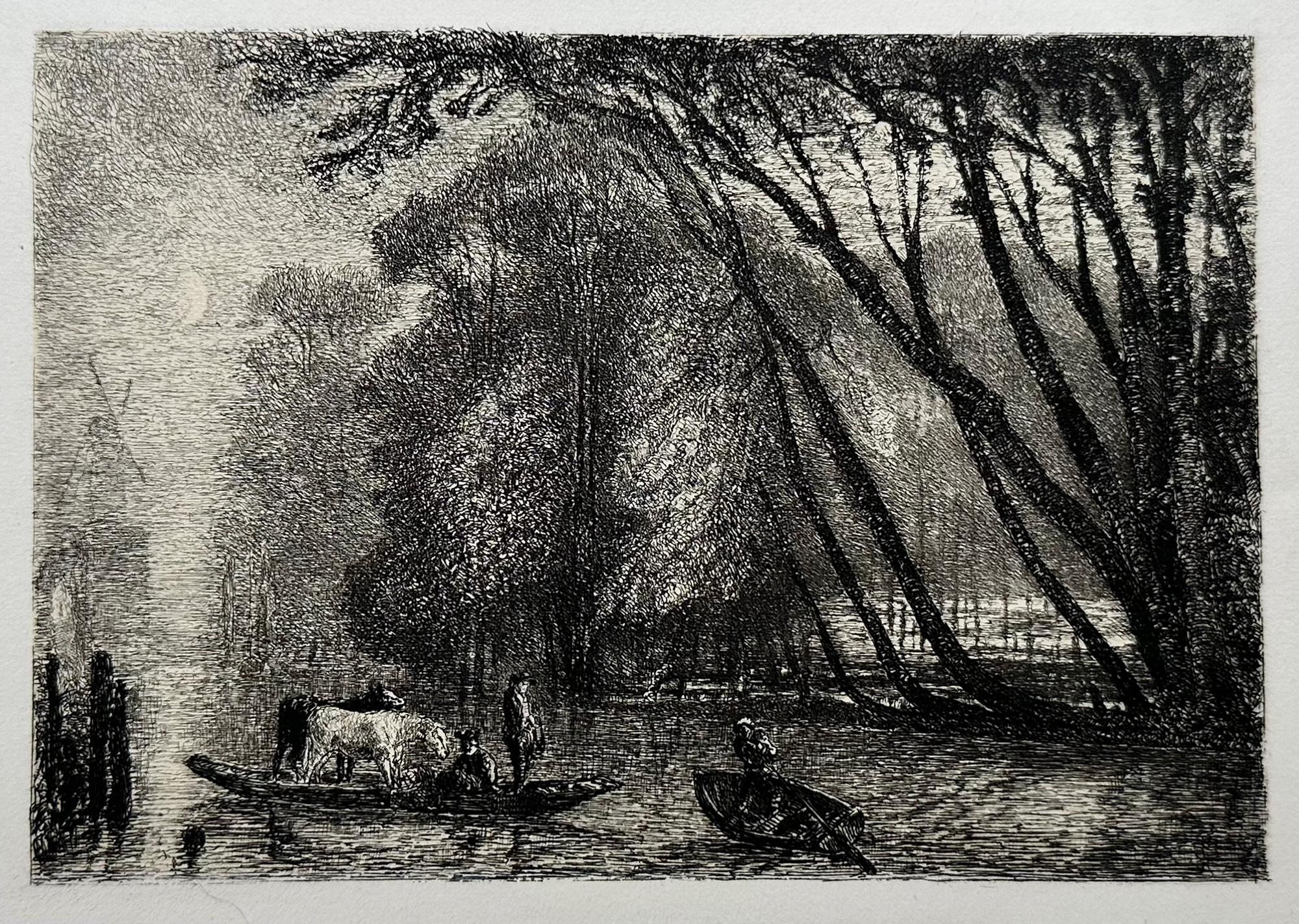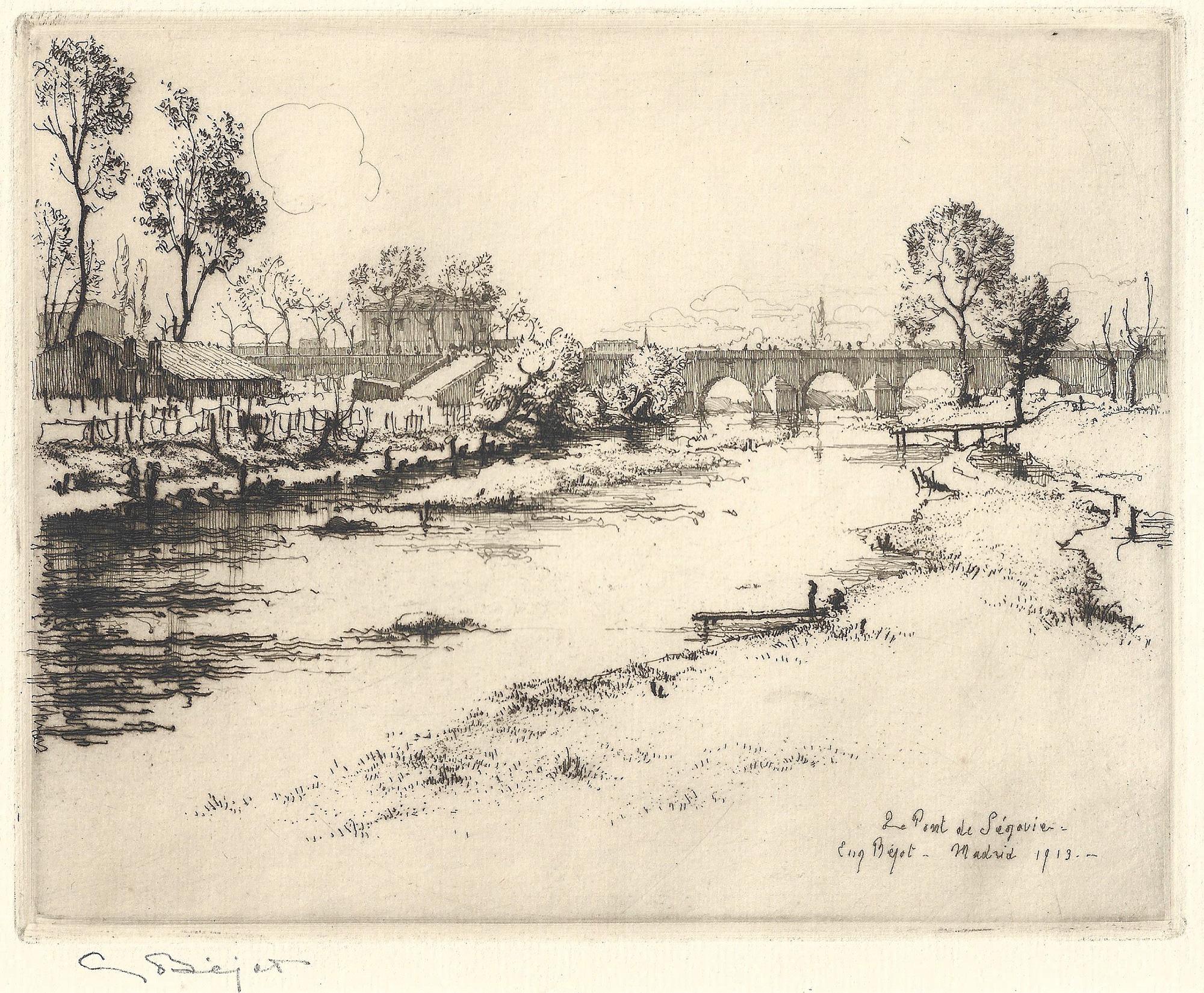Charles-Emile JacqueUne bourrasque1846
1846
About the Item
- Creator:Charles-Emile Jacque (1813 - 1894, French)
- Creation Year:1846
- Dimensions:Height: 4 in (10.16 cm)Width: 5.63 in (14.31 cm)
- Medium:
- Movement & Style:
- Period:
- Condition:
- Gallery Location:Middletown, NY
- Reference Number:
Charles-Emile Jacque
Charles Emile Jacque was born in 1813 in Paris. He was part of the first generation of painters to leave Paris for Barbizon and the forest of Fontainebleau. Jacque was also a founding and influential member of the “Men of 1830” (also called L'école Française De Paysage), an artistic movement who, spurred on by the Revolution of 1830, sought out new directions in landscape painting. His strong, realistic, yet sensitive depictions of shepherds and their flocks form one of the most cohesive and important bodies of work produced by the movement. During the 1840s, he and his friend, Jean-François Millet moved to the village of Barbizon where they felt they could more realistically portray nature. Jacque bought a house there and was influenced by Narcisse Diaz’s technique and Millet’s themes, he found his inspiration in hen-houses, pigsties and flocks of sheep at pasture. He left Barbizon in 1854 and continued to paint in the outskirts of Paris until he died on May 7, 1894. Works by his hand are held by numerous museums such as the Baltimore Museum of Art, Isabella Stewart Gardner Museum in Boston, Cincinnati Art Museum, National Galleries of Scotland in Edinburgh, Gallery of Modern Art in Glasgow, Minneapolis Institute of Arts, Metropolitan Museum of Art in New York, Ashmolean Museum of Art and Archaeology, and Philadelphia Museum of Art and, of course, at the Musée du Louvre and Musée d’Orsay in Paris.
- ShippingRetrieving quote...Ships From: Middletown, NY
- Return PolicyA return for this item may be initiated within 30 days of delivery.
- En Provence; la Maison d'Orléans (Valognes)By Félix Hilaire BuhotLocated in Middletown, NYEtching in brownish black ink on cream laid paper, 5 3/8 x 3 1/2 inches (135 x 87 mm), partially trimmed lower sheet edge. With the artist's moniker in ...Category
1840s French School Landscape Prints
MaterialsHandmade Paper, Etching
- Le Marché aux PucesBy Auguste BrouetLocated in Middletown, NYPublished in Paris by Chalcographie Louvre around 1910. Drypoint etching on buff wove paper, 7 x 11 inches (175 x 278 mm) full margins. With the "Musée Louvre Chalcographie" blind st...Category
Early 20th Century French School Landscape Prints
MaterialsHandmade Paper, Drypoint, Etching
- Matinée Avenue de ClichyBy Auguste BrouetLocated in Middletown, NYDrypoint etching on buff wove paper, 9 1/2 x 10 3/4 inches (240 x 271 mm) full margins. Signed in the image, lower left. With the "Musée Louvre Chalcographie" blind stamp in the lowe...Category
Early 20th Century French School Landscape Prints
MaterialsHandmade Paper, Drypoint, Etching
- Ponte dei Baratteri, VeniceBy Edgar ChahineLocated in Middletown, NYEtching and drypoint on chine collé laid down to cream wove paper, 12 5/8 x 8 5/8 inches (318 x 217 mm), full margins. Signed, titled, and numbered 68/100 in pencil, lower margin. Th...Category
Early 20th Century French School Landscape Prints
MaterialsHandmade Paper, Drypoint, Etching
- Bois de la HayeBy Paul HuetLocated in Middletown, NYEtching and lithograph on cream wove paper, 6 x 8 3/4 inches (151 x 220 mm), full margins. With some scattered light spots of yellowing in the margins on the recto, outside of image ...Category
Mid-19th Century French School Landscape Prints
MaterialsHandmade Paper, Etching, Lithograph
- Le Pont de SegovieBy Eugene BejotLocated in Middletown, NYEtching on cream wove paper, 5 1/2 x 7 inches (138 x 176 mm), full margins. Signed in pencil in the lower margin. With minor mat tone, and two pin-point spots of light discoloration ...Category
Early 20th Century French School Landscape Prints
MaterialsHandmade Paper, Etching
- Itsukushima Moon--A Muro CourtesanBy Taiso YoshitoshiLocated in Burbank, CAA courtesan in Heian period style looks over the prow of her watercraft, looking ahead through the famous torii of Miyajima (Itsukushima) Shrine. She will be dancing in the ceremonies of the annual festival held in Itsukushima in the sixth month of the lunar calendar. Note the ukiyoe style of the beauty and the water, and the Shijo style of the rendering of the torii and the shore. Her enormous traveling hat and veil are placed beside her. From the series "One Hundred Famous Views of the Moon...Category
1880s Other Art Style Figurative Prints
MaterialsWoodcut, Mulberry Paper
- "Enshoku Sanju-roku Kasen" (Thirty-six Enchanting Flowers) Woodblock on paperBy Toyohara KunichikaLocated in Soquel, CA"Enshoku Sanju-roku Kasen" (Thirty-six Enchanting Flowers) Woodblock on paper Elegant woodblock print by Toyohara Kunuchika (Japanese, 1835-1900). Three women are in talking with each other inside, while a man waits outside holding a bag of some kind. The colors in this piece are rich and saturated, primarily blues, greens, and purple. Mat size: 16"H x 20"W Paper size: 14.75"H x 9.88"W Born in 1835, Toyohara Kunichika grew up in the Kyobashi district of Edo in the midst of merchants and artisans. In 1848, at age 13, he was accepted as an apprentice into the studio of Utagawa Kunisada I...Category
1880s Edo Figurative Prints
MaterialsInk, Rice Paper, Woodcut
- "First Horse Day, 1896" - Chiyoda Palace - Japanese Woodblock by Chikanobu YoshuBy Toyohara ChikanobuLocated in Soquel, CA"First Horse Day, 1896" - Chiyoda Palace - Japanese Woodblock by Chikanobu Yoshu Colorful and expressive court scne by Toyohara Chikanobu,"Yoshu" (Japanese, 1838-1912). This is the r...Category
1890s Edo Figurative Prints
MaterialsRice Paper, Ink, Woodcut
- "Various Himochi" Wagashi Festival Japanese Woodblock Print by Utagawa ToyokuniLocated in Soquel, CA"Various Himochi" Wagashi Festival Japanese Woodblock Print by Utagawa Toyokuni Rare oversized early 19th century 5-tiered woodblock by Utagawa Ichiyosai Toyokuni, (Japan, 1769-1825), a Japanese lord and wife oversee a sekku festival of food, music, and dolls or toys. '"oshi" is the first day of “Mi (Snake)” in the third month of the lunar calendar. This day, known in modern Japan as the Girls' Festival, originated in China as a form of purification ceremony in which water and drinking peach blossom wine were used to drive away evil. Many kinds of hishi-mochi appear in this picture of hina ningyo (dolls associated with Hinamatsuri, or the Girl’s Day) from Omochae. The custom of eating special dishes at events throughout the year and at milestones in people's lives has existed since ancient times. This paragraph specifically focuses on the annual event called sekku, and life events that involve eating sweets. Joshi is the first day of “Mi (Snake)” in the third month of the lunar calendar. This day, known in modern Japan as the Girls' Festival, originated in China as a form of purification ceremony in which water and drinking peach blossom wine were used to drive away evil. According to the Keiso saijiki, in ancient China, on the third day of the third lunar month, people ate “ryuzetsuhan,” which is the juice of gogyo (Jersey cudweed) mixed with rice flour and nectar. In Japan, there is a record in the Heian period history book Nihon Montoku tenno jitsuroku [839-5] that it was an annual event to make kusamochi using gogyo on the third day of the third month of the lunar calendar, which may have been influenced by Chinese customs. The tradition of eating kusamochi on the third day of the third month of the lunar calendar continued after that. By the Edo period, however, hishimochi had come to be used as a sweet to serve on the third day of the third month. A picture of a hishimochi is included in the Morisada manko , which we mentioned in Part 1. According to it, hishimochi in the Edo period were often three layers of green-white-green instead of the now common red-white-green. However, it is possible to see from our collection that not all hishimochi were made in this way. Omochae published in 1857, is a good example. Omochae is a type of ukiyoe print...Category
1820s Edo Figurative Prints
MaterialsInk, Rice Paper, Woodcut
- Kiyomizu Temple, Scenes of Famous Places along Tôkaidô Road - Woodblock on PaperBy Utagawa Hiroshige IILocated in Soquel, CAKiyomizu Temple, Scenes of Famous Places along Tôkaidô Road - Woodblock on Paper Full Title: Kyoto: Kiyomizu Temple (Kyô Kiyomizudera), from the series Scenes of Famous Places along...Category
1860s Edo Landscape Prints
MaterialsInk, Rice Paper, Woodcut
- Sumiyoshi: Dengaku dance performed during an Onda ceremony - Woodblock PrintBy Utagawa HiroshigeLocated in Soquel, CASumiyoshi: Dengaku dance performed during an Onda ceremony - Woodblock Print Bright woodblock print by Utagawa Hiroshige (Japanese, 1797-1858). In this scene, two dancers with swords and fans are facing each other, in the center of a courtyard. There are spectators surrounding them, including nobles in black clothing on a balcony. Presented in a new off-white mat with foamcore backing. Mat size: 16"H x 20"W Paper size: 9.63"H x 14.5W" Utagawa Hiroshige (1797-1858, sometimes called Ando Hiroshige) was the second of the two great masters of the Japanese landscape woodblock print...Category
1830s Edo Figurative Prints
MaterialsInk, Rice Paper, Woodcut

